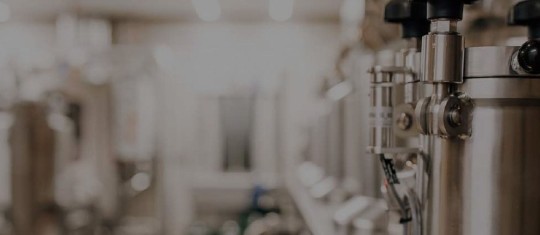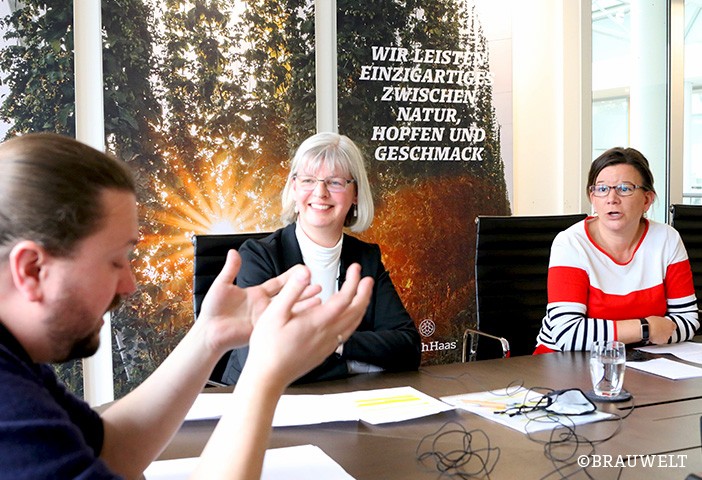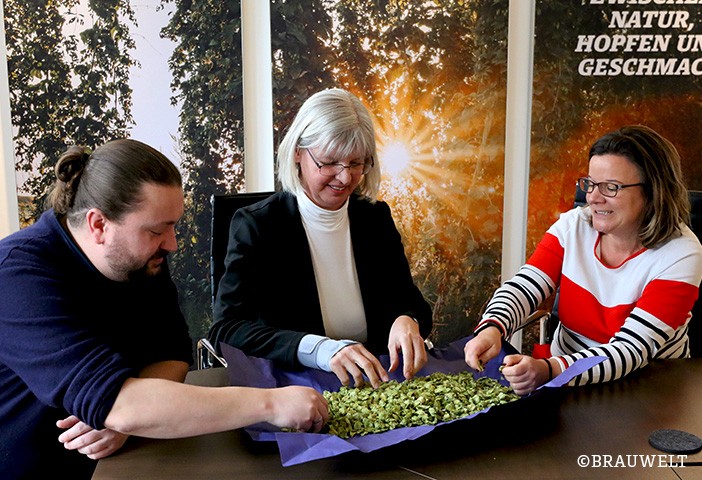Hops don't really want to be in beer. The green gold is like a stranger, a solid in the liquid that not only has to get into the beer but also out again and whose diverse aroma substances virtually outdo each other in their insolubility. Overcoming the obstacles to aroma transfer and promoting extraction without wasting time and beer is the great process engineering challenge of Dry hopping. A study from December 2021 showed that redilution increases the efficiency of Dry hopping and could become the new method of choice for some brewers.
Problems of Dry Hopping
Scientific studies have long since proven that the higher the hop dosage, the more the extraction of aroma substances is hindered in static Dry hopping. Therefore, dynamic hopping techniques, such as the Hop Gun or the Hop Rocket, were increasingly developed and applied to increase the yield. Here, too, it became apparent that although turbulent flows improve extraction, the mass transfer decreases as the hop load increases and the concentration of the substances increases. One might think that the aroma substances of the hops get in each other's way and prevent a connection with the beer.
First and foremost, it is the substance group of sesquiterpenes that resists a connection with beer. These are aroma compounds that bring herbaceous, woody and spicy aromas to beer. Sesquiterpenes consist only of carbon atoms and have no functional groups. This means that they are very insoluble in water and only want to dissolve somewhat when oxidised. Compared to the cumbersome sesquiterpenes, other substance groups with functional groups from the hop oil dissolve better in the beer, such as the esters, terpene alcohols and thiols that are responsible for the fruity, citrusy and floral aromas. The longer the extraction takes, the more the resinous and green-grassy aromas come to the fore.
External Dry Hopping?
The parameter of the "concentration of hops in beer" has been brought into focus by a study from December 2021 in which Michael Kohles, Ferdinand Gutsch, Martin Zarnkow, Fritz Jacob as well as Roland Novy and Christina Schönberger from BarthHaas were involved.
A particularly highly hopped beer with a concentration of 6.5 per cent hops to beer (w/w) was produced on a laboratory scale, which was then rediluted with normal beer to a concentration of 1.5 per cent. The content of the various aroma substance groups was measured and compared with a non-re-diluted beer with the same hop concentration (1.5 %). In addition, both beers were sensory evaluated and compared by a taster panel.
The operators of the study were interested in finding out whether Dry hopping can be carried out externally, i.e. outside the fermentation or storage tank, by producing a hop slurry, i.e. a thick suspension, in a first step, which is immediately diluted in a second step and finally freed from the hop particles without losing valuable aroma substances. For the last step, a decanter was used, a receding screw that separates the solids from the beer, leaving very dry particles and thus no significant beer losses.
Stronger flavors
The measurements of the aroma substance groups as well as the sensory evaluation showed that there are no significant differences between the back-diluted and the non-back-diluted beer - with the exception of the thiols as well as the caryophyllenes and humulene, both of which belong to the sesquiterpene group. Sensory analysis showed that the fruity aromas came out better in the back-diluted beer - thanks to the thiols, and the herbaceous, spicy and woody aromas in the non-back-diluted beer - thanks to the caryophyllenes and humulenes.
Although maximum extraction is not achieved in the first process step due to the high concentration, this can be compensated for by the immediately following re-dilution. The total process time of this experiment was a little more than two hours - so the extraction is very fast.
The future of Dry Hopping?
All in all, the extraction in this process is much more efficient than with the previously used method of dynamic Dry hopping:
With only a few hours instead of several days, the contact time is considerably shorter. The tank occupancy can also be shortened as a result. Beer losses hardly occur at all. Sensorically, the rather undesirable herbaceous, woody and spicy aromas are weaker in favour of the favoured fruity hop notes. The potential for biotransformation of the hop aroma substances remains intact because the aroma substances are also fully available with this method. On the other hand, the enzymes responsible for the hop creep effect have been removed together with the hop particles.
According to Friedrich Banke (Banke GmbH), these investments can be amortized in less than 2 years for annual production volumes of over 100,000 hl with an average of 400 g/hl. For larger hop and beer volumes, correspondingly faster.
The scientific article about the study was published in the journal Brauwissenschaft: „An approach to develop an external dry hopping method by restoring the aroma transfer through dilution”, M. Kohles, F. Gutsch, M. Zarnkow, F. Jacob, R. Novy and C. Schönberger, Brewing Science, November/December 2021 (Vol. 74).





